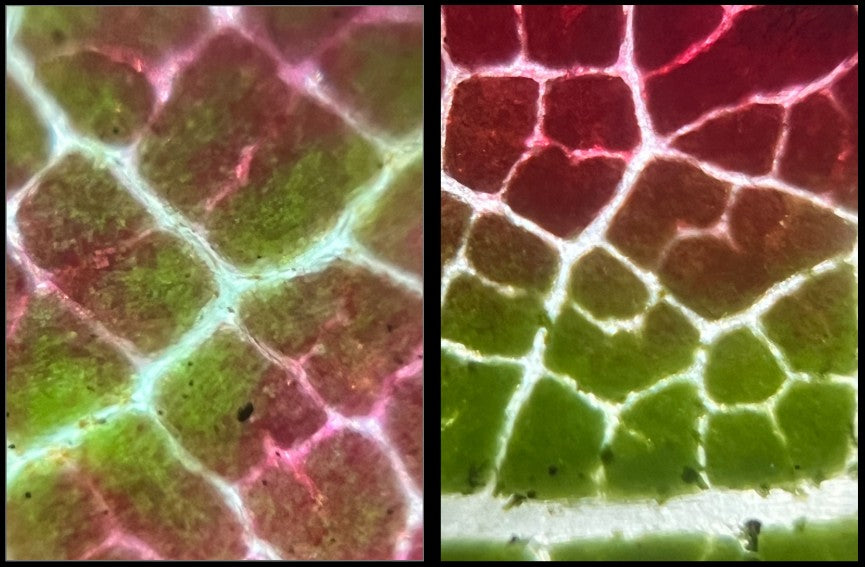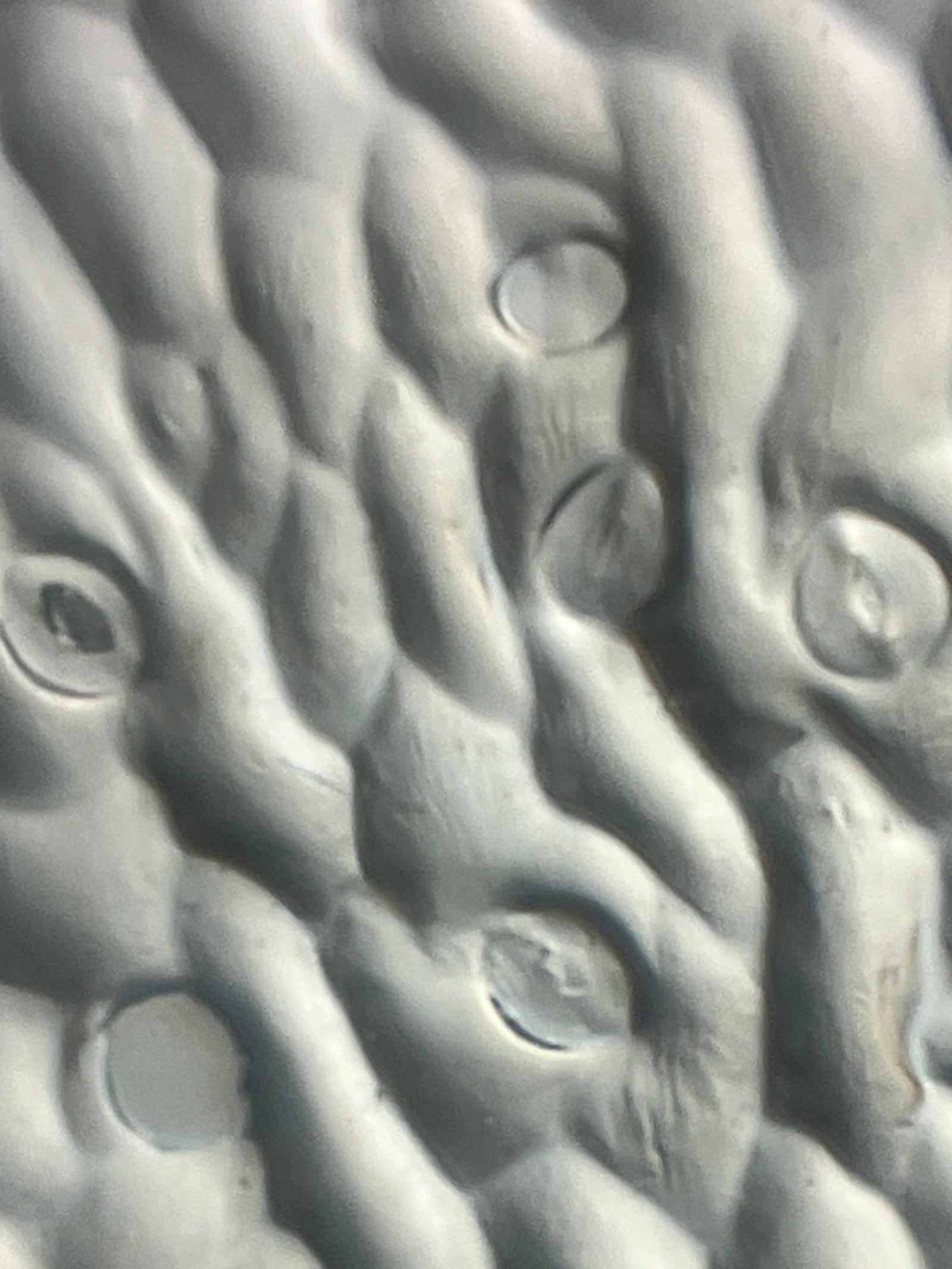October is the time of year when spooky things like mummies and skeletons are everywhere. So the timing of this month’s blog focus and specimen was perfect! When I found the skeleton of a frog on my porch I knew I had to look at it under my Foldscope 2.0! Read on to find out what I saw!

Figure 1. Picture of the frog skeleton
(Photo Credit: Holly A. Stuart)
Mummified Frogs?
While the frog I found wasn’t technically a mummy, I hope you will forgive my creative stretch for the purpose of this spooky themed blog post. Most of the skin of the frog was gone leaving only bone, but there was still some skin on one foot and along the bottom jaw bone. The skin I found was completely dried out which is what made me think of mummies!
The foot was a bit large, but I was able to secure it to a slide with clear tape. My first thought when looking at the long toes was that it looked like ET’s hand!

Figure 2. Frog foot viewed under a Foldscope 2.0 at 50X magnification using brightfield lighting
(Photo Credit: Holly A. Stuart)
The skin attached to the jaw was easy to peel off using tweezers. I mounted the skin on a slide using clear tape. This section of skin was covered in what looked like insect eggs. They were not visible with brightfield lighting, but using darkfield and reflective lighting made them stand out. I have to admit that this view gave me the heebie jeebies!

Figure 3. Desiccated frog skin viewed under a Foldscope 2.0 at 50X magnification with darkfield lighting (left) and reflective lighting (right)
(Photo Credit: Holly A. Stuart)
Frog Skeleton!
The bones of the frog were easy to access since they were completely exposed when I found the frog. Using tweezers, I carefully pulled apart the bones of the skeleton, placed them on slides and secured them with clear tape.
Bones are opaque, so you do have to use alternative lighting to really see them clearly. This is the forearm where it attaches to form the elbow joint. Images captured using the different lighting conditions are included below to demonstrate the capabilities of the LED Light Module 2.0 when used with the Foldscope 2.0.

Figure 4. Front forearm of frog viewed under a Foldscope 2.0 at 50X magnification with brightfield (left), darkfield (center), and reflective (right) lighting
(Photo Credit: Holly A. Stuart)
The humerus bone (which is the upper arm that extends from the elbow joint to the shoulder) was interesting to see under the Foldscope. You can clearly see the “ball” on the head of the humerus. This is the part of the ball and socket joint where the humerus attaches to the shoulder.

Figure 5. Ball joint of the humerus bone viewed under a Foldscope 2.0 at 50X magnification with brightfield (left), darkfield (center), and reflective (right) lighting
(Photo Credit: Holly A. Stuart)
The spine was a bit of a challenge to mount on a slide because of its size and curvature. I gently placed it on the slide and secured it with a piece of clear tape. Because the spine stuck up so much from the slide, focusing was a challenge with brightfield lighting, but I was able to see the vertebrae using reflective lighting.

Figure 6. Frog vertebrae viewed under a Foldscope 2.0 at 50X magnification with reflective lighting
(Photo Credit: Holly A. Stuart)
Have you looked at mummies and skeletons under a Foldscope 2.0? Use your Foldscope to dive into the microscopic world and find the beauty (and spookiness!) that is there waiting for you. Share your microscopic images and thoughts on the Microcosmos. Be sure to tag us on social media when you post the results of your explorations, creations, and discoveries! We love to see how Foldscopers around the world are using their Foldscopes in new and innovative ways!
Facebook: @Foldscope
Instagram: @teamfoldscope
Blue Sky: @teamfoldscope.bsky.social
TikTok: @foldscope
Threads: @teamfoldscope
Twitter: @TeamFoldscope



